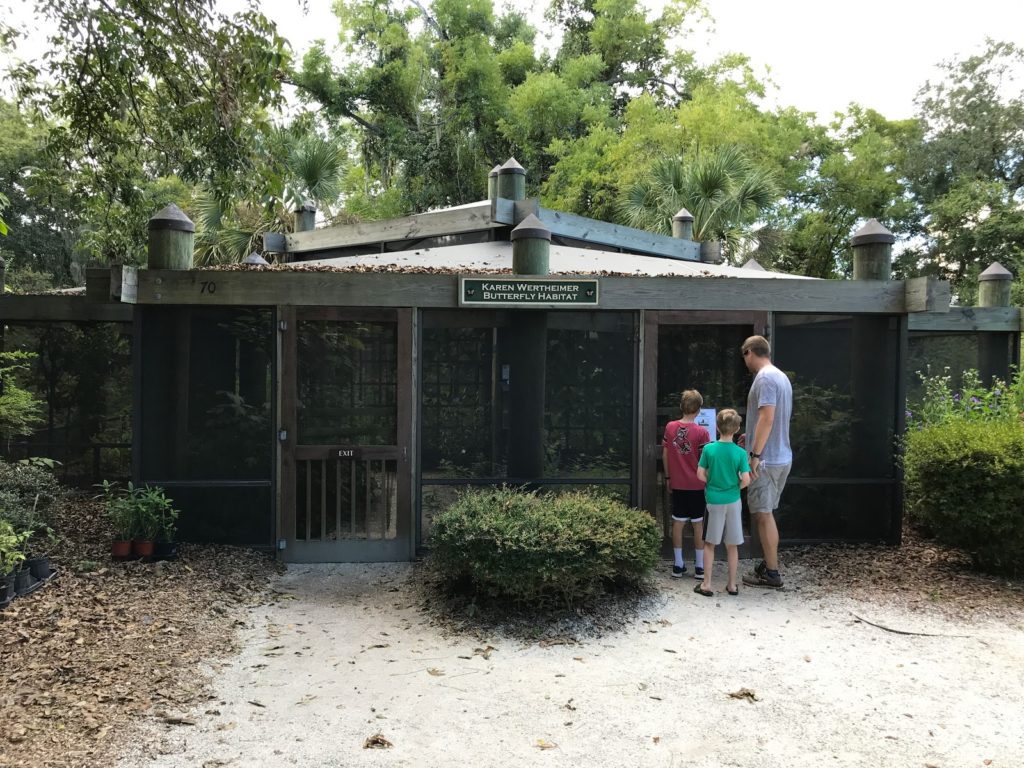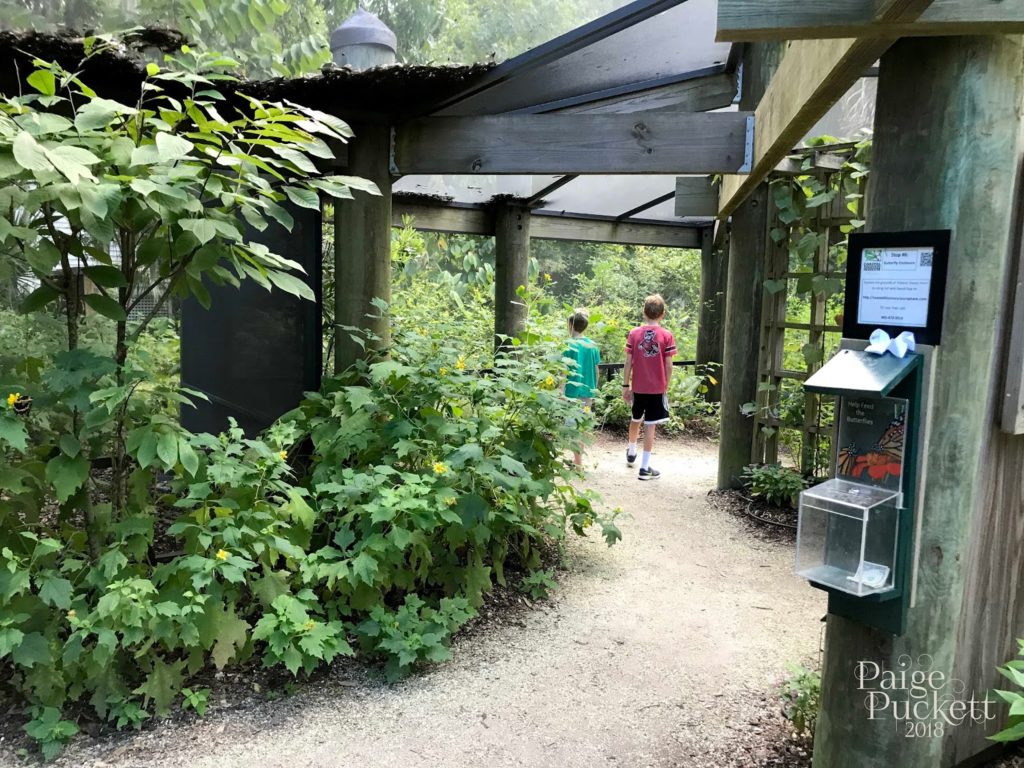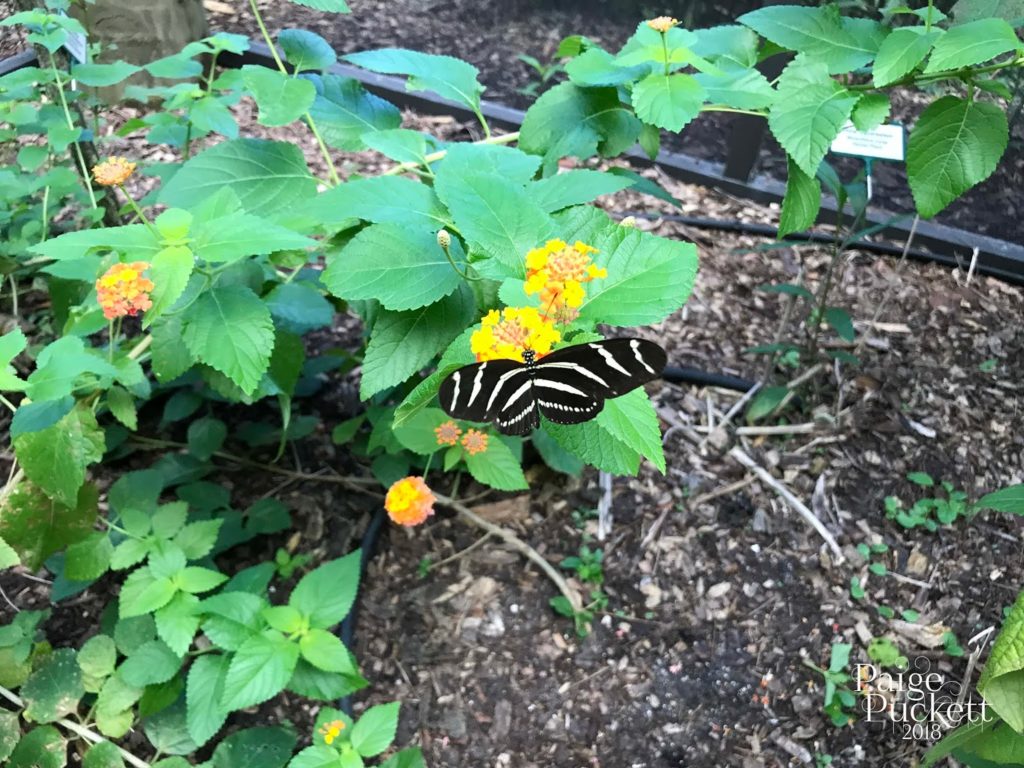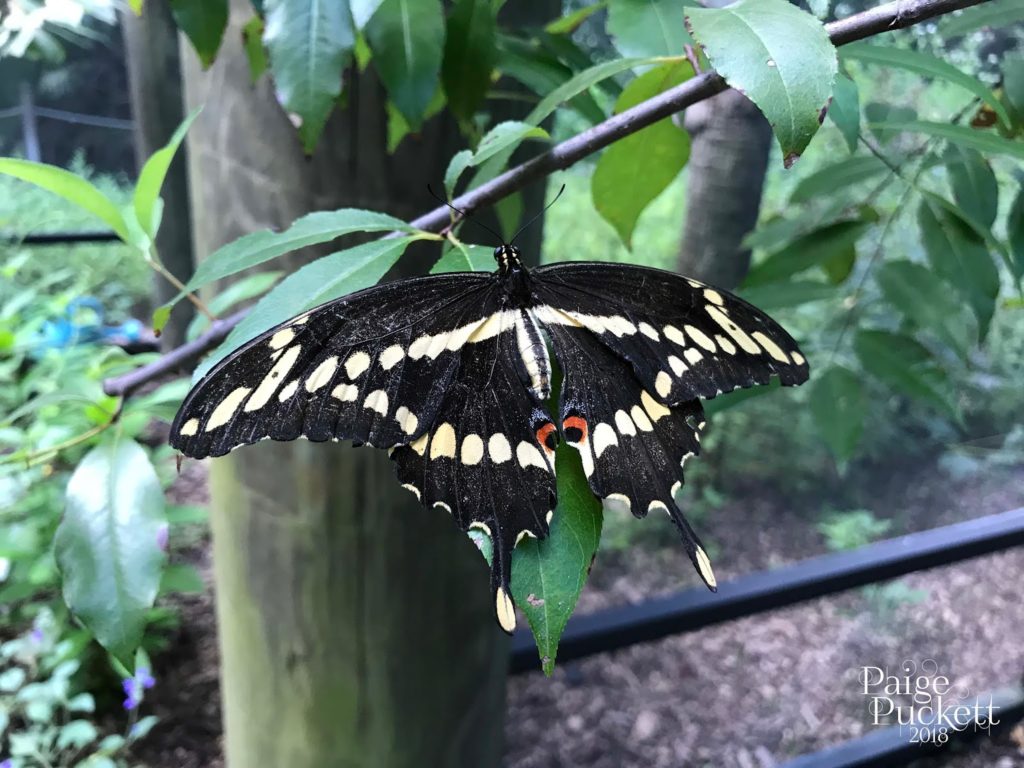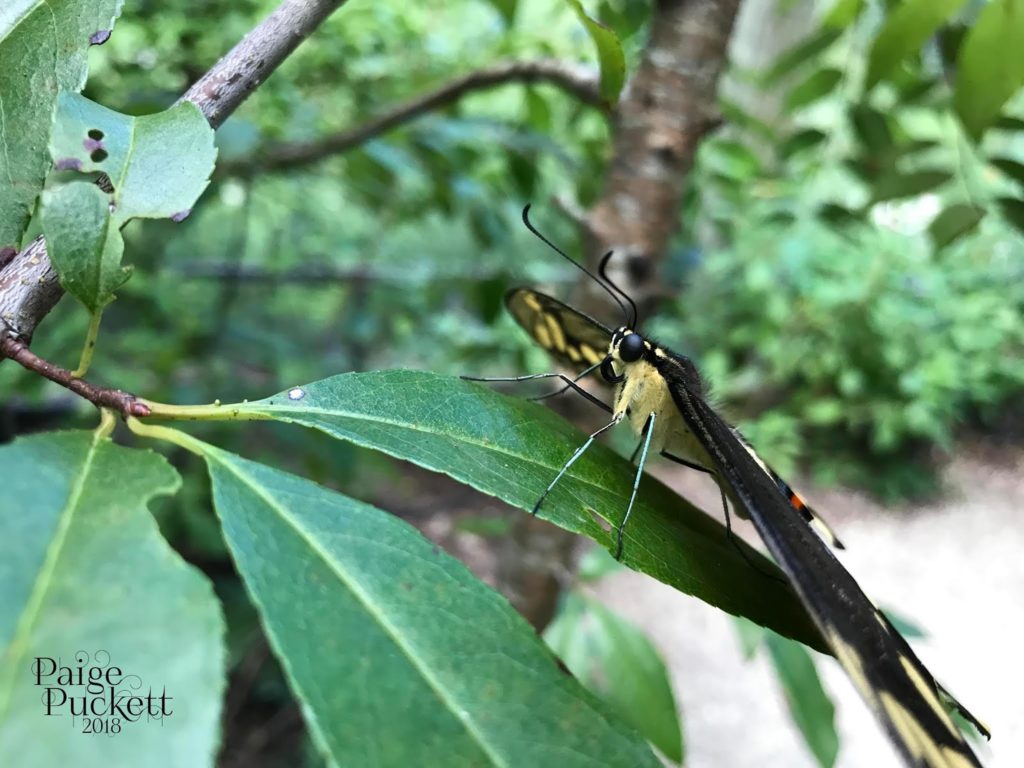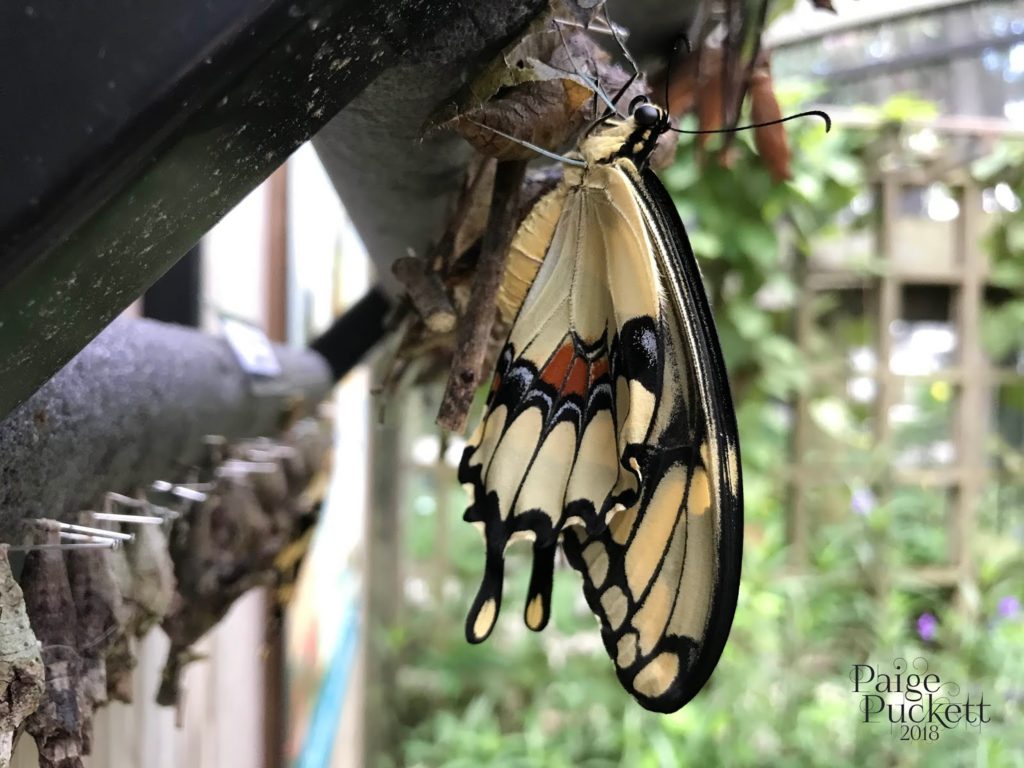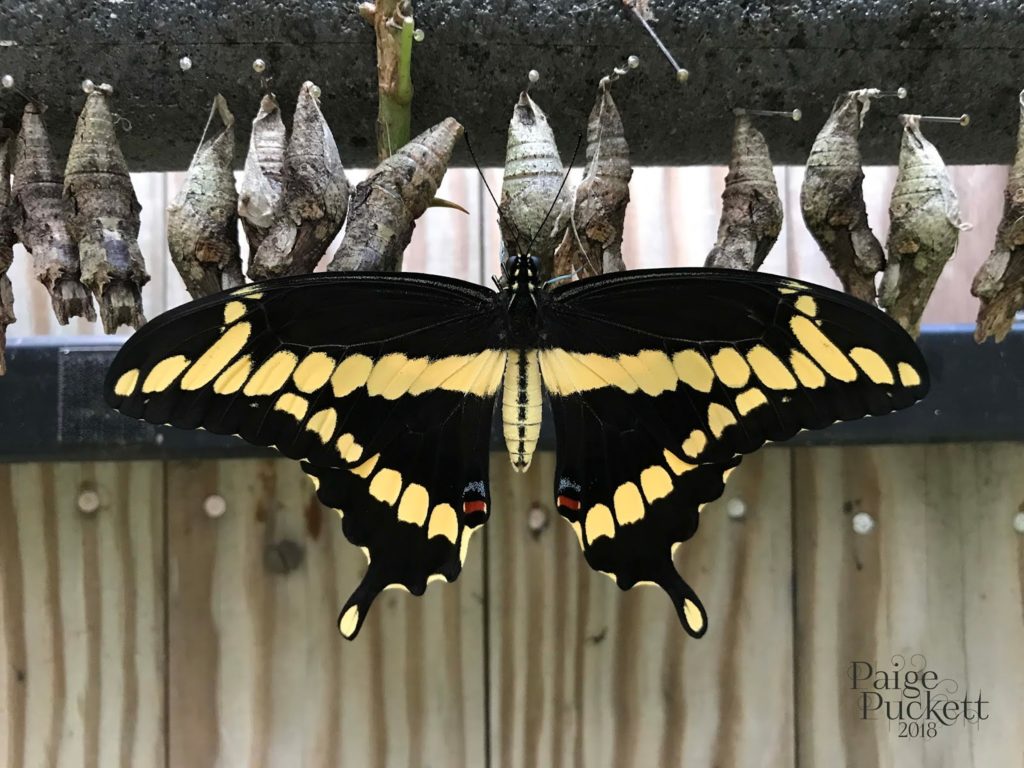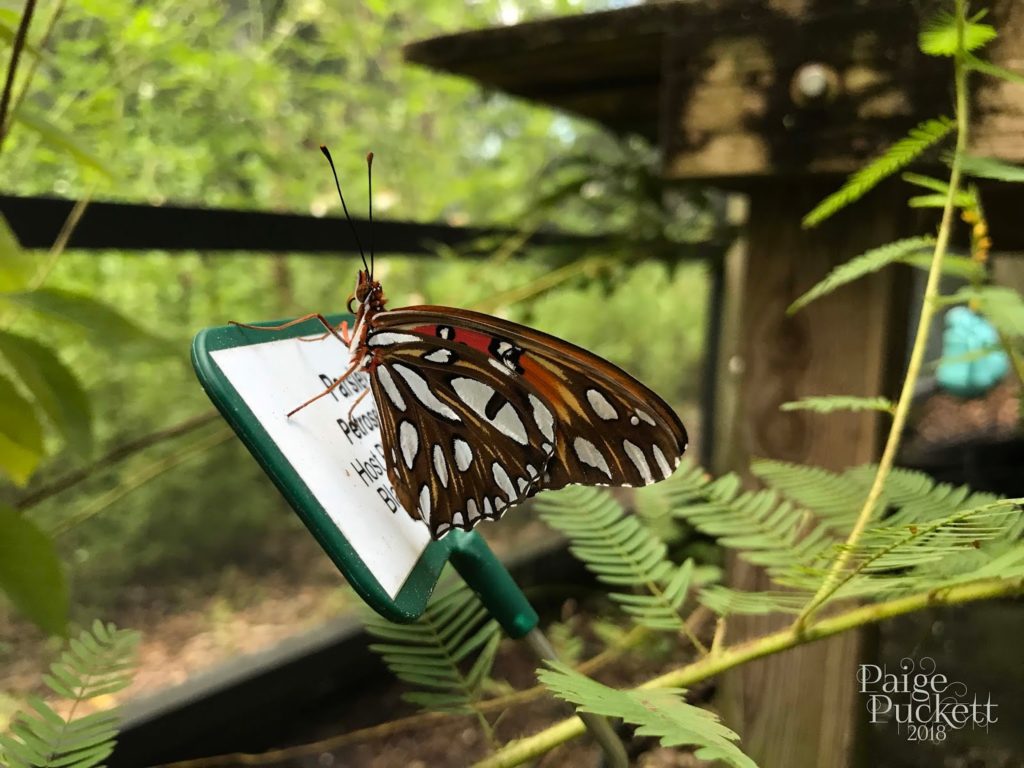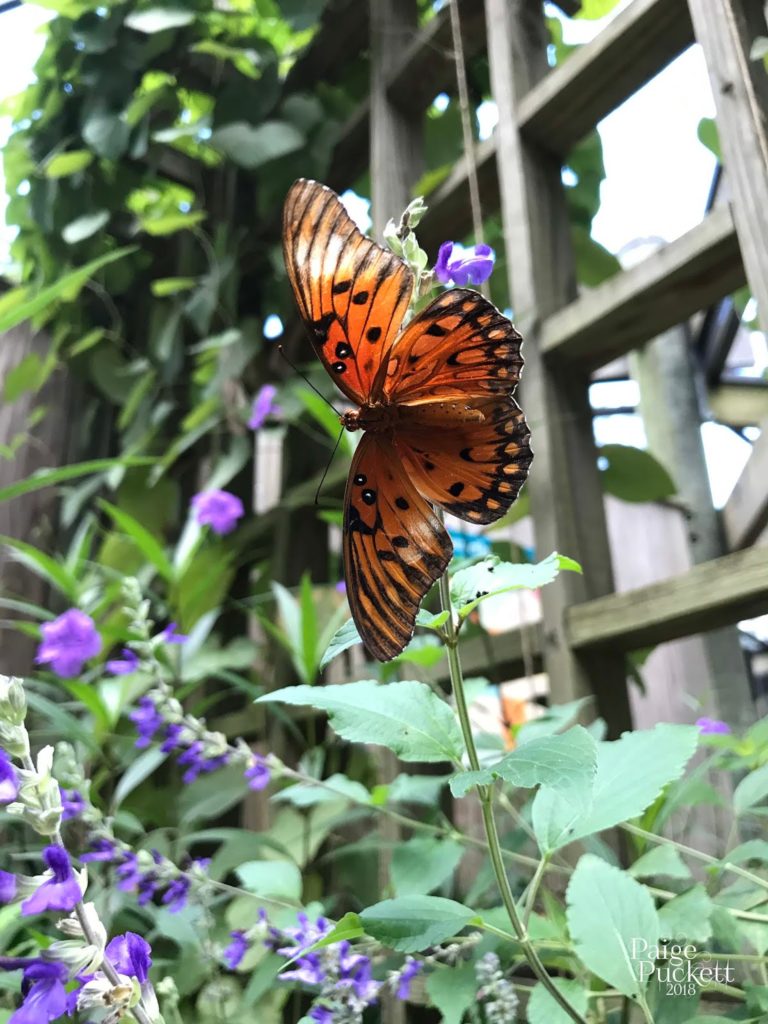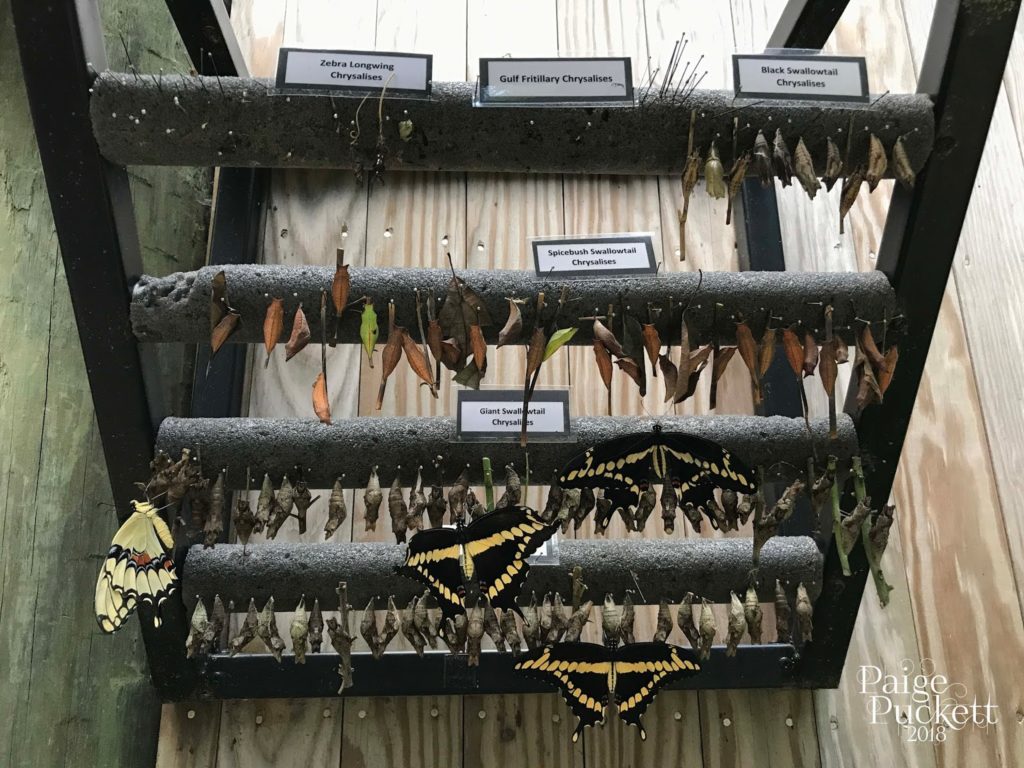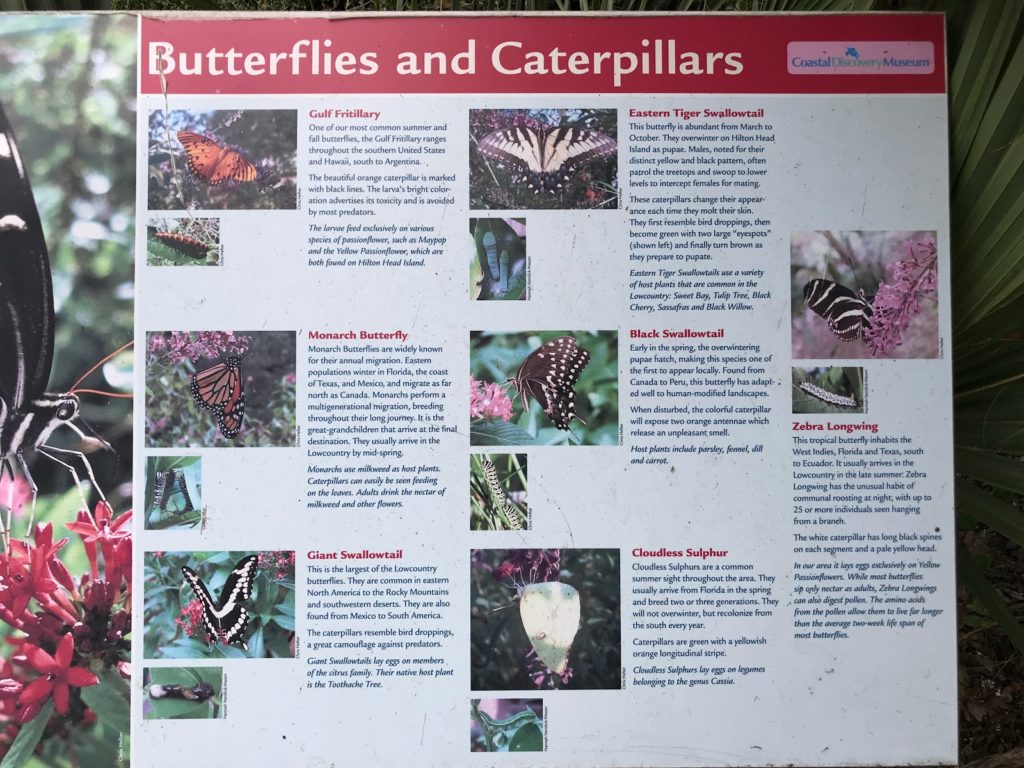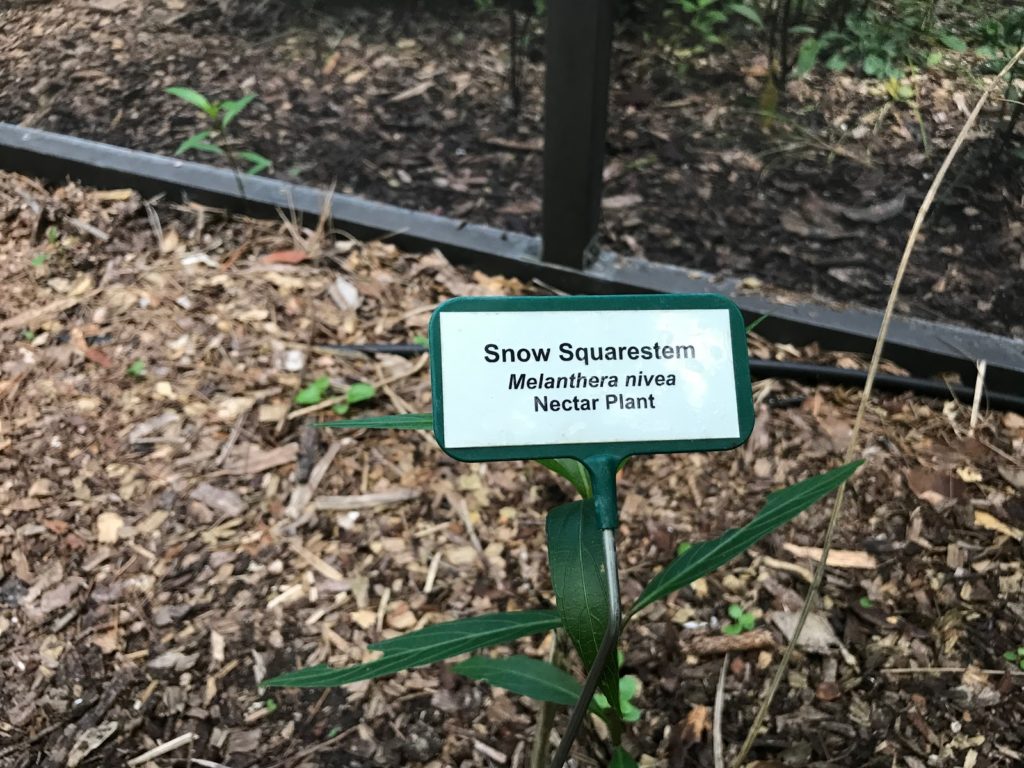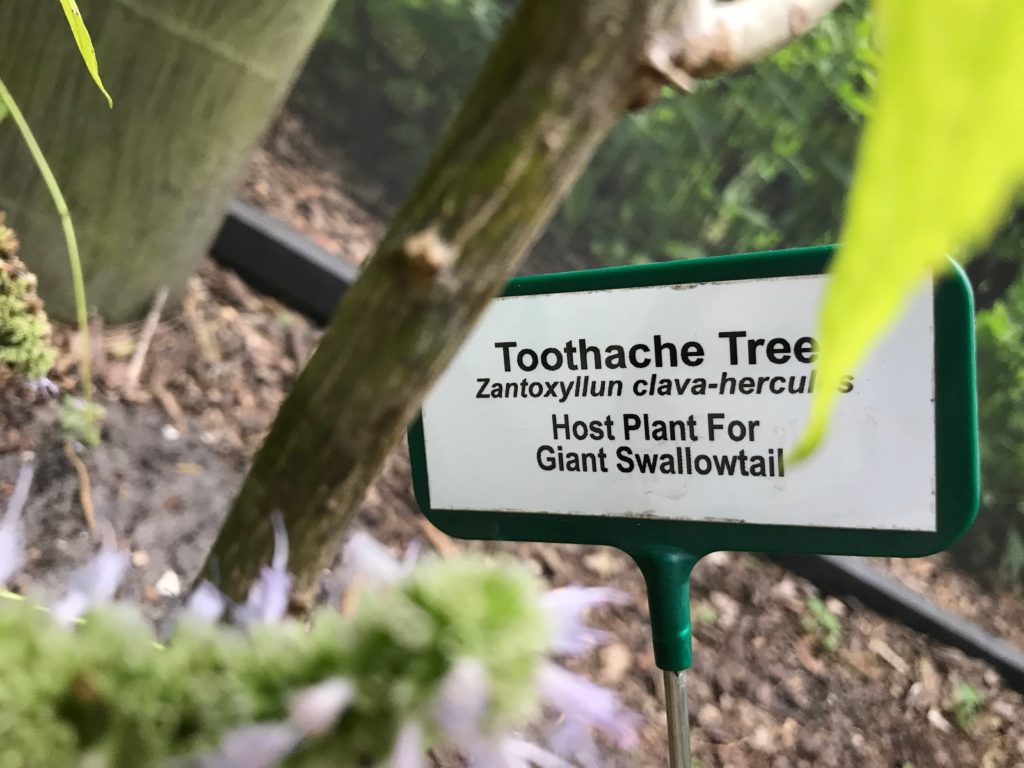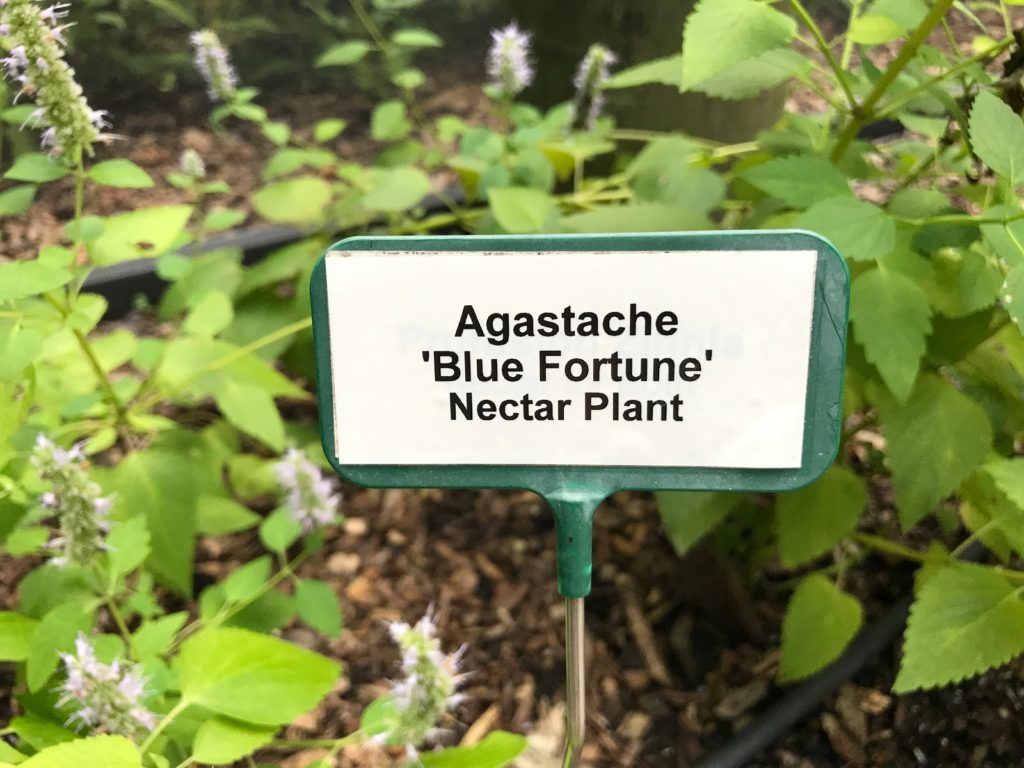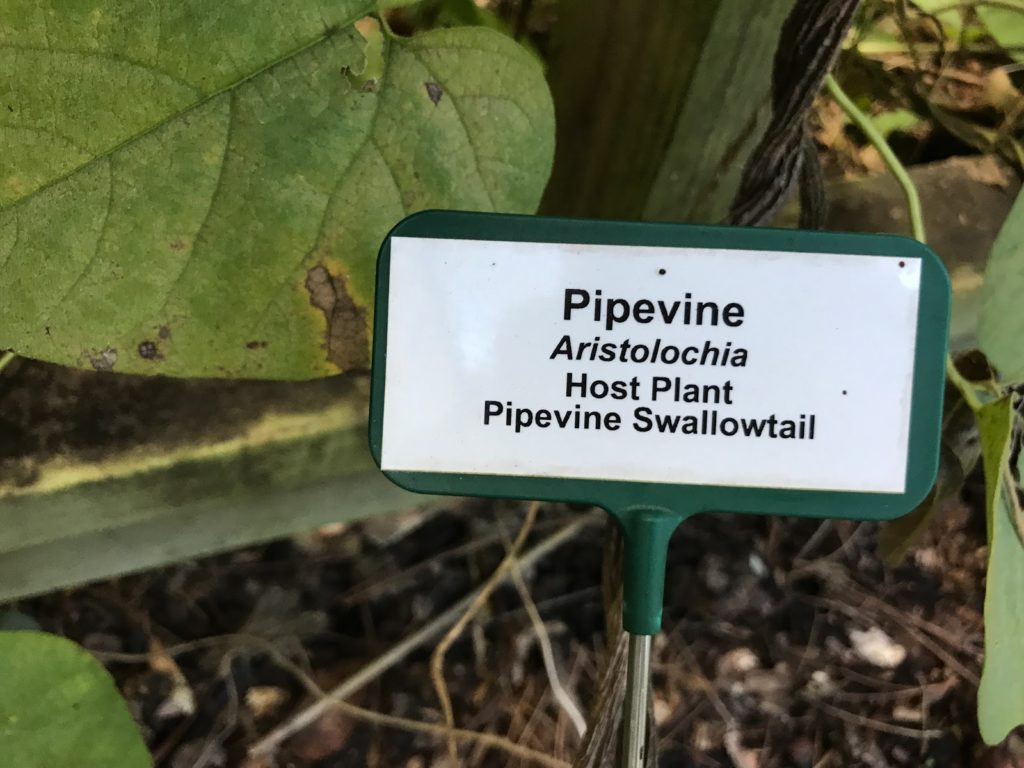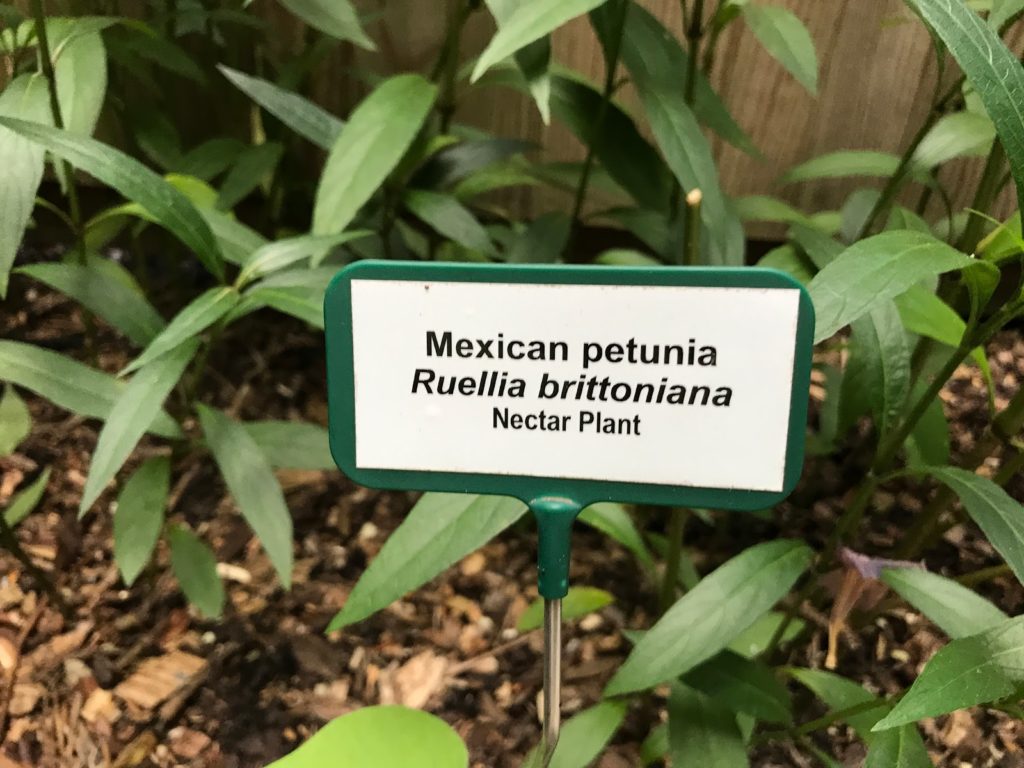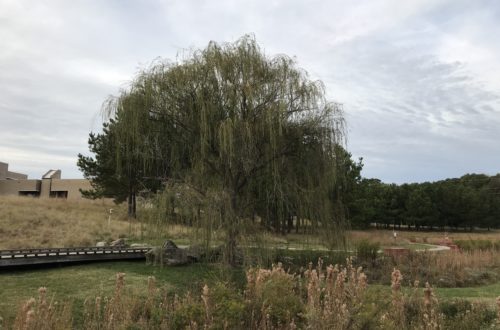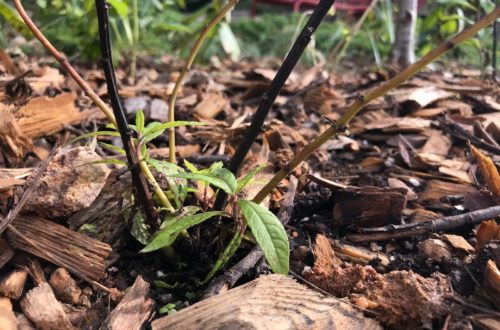Coastal Discovery Museum’s Butterfly Habitat Plants
Last summer we went to Coastal Discovery Museum on Hilton Head Island. The entire visit was great, but my favorite part was the butterfly habitat. I photo-documented every plant whose name was unfamiliar to me (or rather nearly all the plant tags) so that I could look them up later and determine if they could be added to my own yard.
Hilton Head is Hardiness Zone 8b, and Raleigh is 7b, which means that some plants may be hardy in Hilton Head but not in my yard. Many of the plants in the habitat were right over that line between 7 and 8, so they might work better as annuals. I didn’t look up whether they could be brought inside for winter as my goal is to work with my local conditions. Another difference in the two locations is that my yard does not have very wet conditions, and the museum was located in wetlands. Plants with high water demands won’t do well in my yard. Finally, I found that not all the butterflies in the habitat are present or common in Piedmont North Carolina such as Giant Swallowtail and Palamedes Swallowtail.
- ‘Toothache Tree’ Zanthoxylum clava-herculis – Host Plant for Giant Swallowtail
- ‘Blue Fortune’ Agastache – Nectar Plant
- ‘Mexican Petunia’ Ruellia Brittoniana – Nectar Plant
- ‘Pipevine’ Aristolochia – Host Plant for Pipevine Swallowtail
- ‘Mystic Spires Blue’ Salvia – Nectar Plant
- ‘Summersweet’ Clethra Alnifolia – Nectar Plant
- ‘Black Cherry’ Prunus Serotina – Host Plant for Tiger Swallowtail
- ‘Red bay’ Persea Borbonia – Host Plant for Palamedes Swallowtail
- ‘Pentas’ Pentas Lanceolata – Nectar Plant (non-native)
- ‘Snow Squarestem’ Melanthera nivea – Nectar Plant
- Citrus – Host Plant for Giant Swallowtail
- ‘Peach Porterweed’ Stachytarpheta Mutabilis – Nectar Plant
- ‘Firespike’ Thyrsacanthus tubaeformis – Nectar Plant
- ‘Water Hemlock’ Cicuta Malculate – Host Plant for Black Swallowtail


